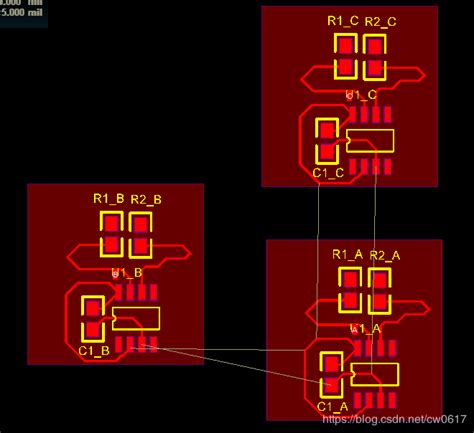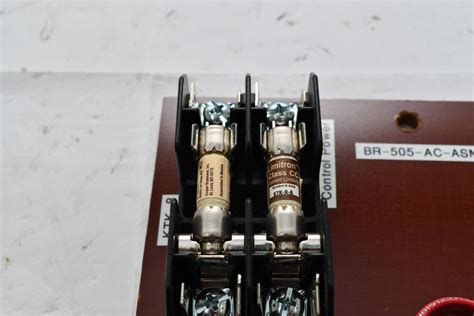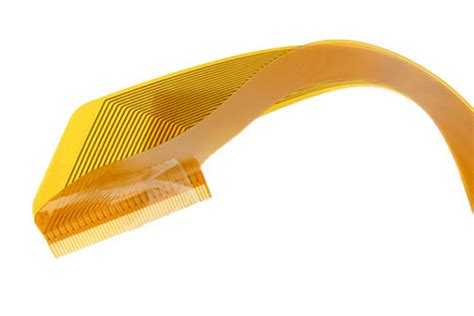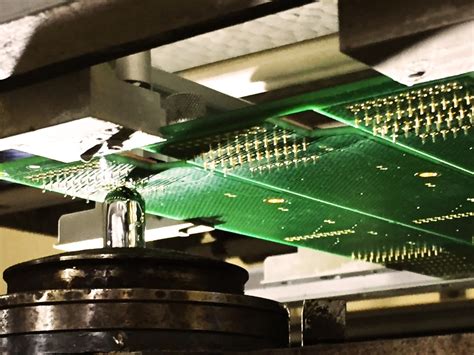Unlocking Efficiency: Altium Multi-Board Assembly Explained
Key Takeaways
Altium Multi-Board Assembly has revolutionized the way engineers approach complex electronic projects. By integrating multiple printed circuit boards (PCBs) into a single cohesive assembly process, companies can significantly enhance their pcb assembly workflows. The main advantage of using Altium in this context is its ability to streamline design processes, allowing for simultaneous design and collaboration on multiple boards. This collaborative approach ensures that all team members are aligned, minimizing the risk of errors that can arise from managing separate designs. Furthermore, the efficiencies gained from utilizing Altium’s features can lead to reduced lead times and increased productivity, which is essential for meeting tight deadlines in the ever-evolving tech landscape.
By adopting multi-board assembly techniques with Altium, teams can navigate complexity more effectively. This means that engineers no longer have to treat individual PCBs as separate entities but can instead work on them in an integrated manner, which facilitates better communication and less redundancy in design changes. Additionally, adopting best practices in this area encourages a culture of innovation, as teams are better equipped to tackle challenges associated with intricate electronic designs. Overall, implementing Altium’s solutions ensures that organizations remain competitive while delivering high-quality pcba outcomes.
Introduction to Altium Multi-Board Assembly
Altium Multi-Board Assembly (MBA) is revolutionizing the landscape of PCB assembly in the realm of complex electronic projects. This innovative approach not only simplifies design workflows but also aligns with the increasing demand for collaboration among engineering teams. By integrating multiple board designs into a singular project, engineers can work more efficiently, ensuring that all elements are aligned and tested simultaneously. This holistic view of pcba processes facilitates rapid iteration, allowing teams to identify and rectify potential issues early in the design phase.
With the adaptability that Altium provides, teams can construct comprehensive assemblies while still maintaining flexibility across different projects. The platform’s robust features cater to both large-scale companies and smaller enterprises alike, demonstrating that efficiency does not have to compromise quality. By leveraging features like real-time collaboration tools and unified design environments, engineering professionals can effectively streamline their operations.
“Collaborative design is no longer a luxury; it’s a necessity for modern engineering.”
Incorporating systematic approaches and industry knowledge into multi-board assembly, teams can expect enhanced productivity rates—a vital aspect considering budget constraints and time-to-market pressures. In essence, Altium Multi-Board Assembly is not merely about assembling multiple PCBs; it underscores a shift towards more integrated and efficient design methodologies within electrical engineering.
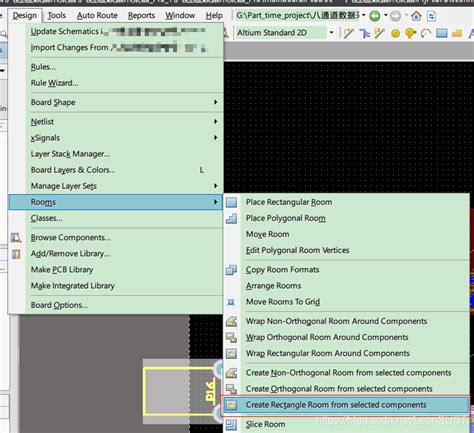
Key Advantages of Multi-Board Assembly in Engineering
The advantages of utilizing multi-board assembly in the engineering sector are substantial, particularly in the realm of PCB assembly. One of the most significant benefits is the ability to manage complex designs effectively, which often involves numerous interconnected printed circuit boards (PCBs). By adopting multi-board assembly techniques, engineers can create a more organized workflow that enhances design efficiency. These techniques facilitate parallel processing, enabling teams to simultaneously work on different boards, thereby reducing time-to-market for intricate electronic devices. Additionally, with advanced software like Altium’s solutions, the integration of multiple boards can be streamlined through improved communication channels and shared resources. This fosters a culture of collaboration among designers and engineers, promoting innovation and creativity during the development phase. Ultimately, such collaboration not only enhances productivity but also leads to more robust and reliable products. In summary, embracing multi-board assembly allows for a more cohesive approach to design challenges associated with complex electronic projects, streamlining processes for PCB assembly while paving the way for greater efficiency in engineering solutions.
Streamlining Design Processes with Altium
In the realm of PCB assembly, the Altium Multi-Board Assembly approach stands out for its ability to significantly optimize design processes. This innovative strategy not only coordinates the simultaneous development of multiple boards but also integrates various functionalities into a unified workflow. By leveraging tools that streamline communication and data sharing, engineers can effectively reduce iteration times and minimize errors during the PCBA process. The result is a holistic environment where all components, regardless of complexity, are aligned from design through to final assembly. Enhanced automation capabilities enable teams to focus on critical design aspects rather than repetitive tasks, ultimately driving innovation and improving time-to-market for electronic products. As electronic designs grow increasingly intricate, the adaptability of Altium’s solutions becomes essential for navigating challenges associated with multi-board engineering projects. This synergy between interconnected boards creates opportunities for engineers to enhance collaboration, ensuring that each design phase contributes to a successful project outcome while maintaining high standards of quality and performance.
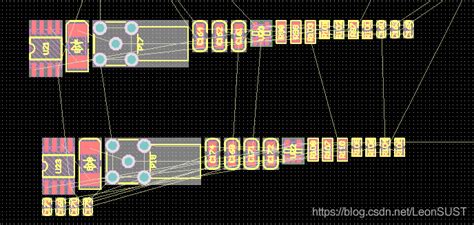
Enhancing Collaboration Through Multi-Board Projects
In the realm of pcb assembly, collaboration stands as a pivotal element, particularly when managing complex electronic designs. The use of Altium Multi-Board Assembly facilitates this collaboration by allowing multiple design teams to work seamlessly together on interrelated projects. This system provides integrated design environments where changes in one board can be easily communicated to others, reducing the likelihood of miscommunication and promoting accuracy throughout the pcba process. By synchronizing efforts across various teams, engineers can leverage shared insights and resources, ensuring that all aspects of the project are aligned and efficiently developed. This collaborative approach not only speeds up design cycles but also enhances the quality of the final product, minimizing errors that may arise from disparate systems. Ultimately, employing Altium’s frameworks for multi-board assembly creates a proactive atmosphere where collaborative engineering thrives, thus reaping significant benefits in productivity and innovation within electronic design projects.
Boosting Productivity: Strategies for Complex Electronic Designs
In the realm of pcb assembly, integrating strategies that enhance productivity is essential for tackling the intricate challenges posed by modern electronic designs. One effective approach is to leverage multi-board assembly techniques, which can significantly streamline workflows and reduce time-to-market. By employing advanced pcba methodologies, engineers can synchronize design tasks, which minimizes errors and redundancies in the development process. To further bolster productivity, it’s crucial to adopt a modular design philosophy; this allows teams to focus on individual components of a product without losing sight of how these elements interact within the entire system. Collaborative tools and frameworks that facilitate real-time communication among various stakeholders also play a vital role in ensuring that project timelines are adhered to while maintaining high-quality standards. As teams embrace these strategies, they not only meet project deadlines more efficiently but also foster an environment that encourages innovation and collective problem-solving—key drivers in achieving optimal results in complex electronic architectures.
Best Practices for Efficient Multi-Board Assembly
To achieve optimal results in multi-board assembly, it is crucial to implement best practices that enhance the overall workflow and ensure precision in every stage of the pcb assembly process. One of the foundational steps is standardizing design protocols to facilitate seamless integration and consistent quality across multiple boards. This involves using shared libraries within Altium to store components, which can significantly reduce errors and save time in future projects. Additionally, leveraging simulation tools enables engineers to anticipate potential issues early in the design phase, thereby minimizing costly revisions later on.
Furthermore, emphasizing collaboration among team members can lead to faster troubleshooting and innovation. Utilizing platforms that allow for real-time communication regarding pcba specifications fosters an environment where feedback is readily available and encourages collective problem-solving. Regularly reviewing project milestones also helps maintain clarity on progress and deadlines.
Lastly, incorporating automated assembly techniques where possible can substantially increase efficiency. By applying these best practices within the realm of multi-board assembly, teams can enhance productivity, reduce lead times, and deliver complex electronic designs with greater confidence and reliability. The culmination of these efforts not only benefits individual projects but also contributes positively to the overall engineering solutions landscape.
Case Studies: Successful Implementations of Altium Solutions
The real-world applications of Altium Multi-Board Assembly illustrate its transformative impact on pcb assembly processes. A notable case involves a leading electronics manufacturer that leveraged Altium’s capabilities to streamline their pcba workflows. This company faced challenges with coordinating multiple teams working on different boards, resulting in delays and miscommunication. By implementing Altium’s integrated environment, they achieved enhanced visibility across the project, which significantly improved the alignment among engineers and designers. The result was a remarkable reduction in the time required for revisions and approvals. Additionally, another case study highlighted a medical device developer that adopted the multi-board assembly approach to ensure stringent regulatory compliance while maintaining high production quality. Their use of Altium technology enabled simultaneous design of interconnected boards, which facilitated faster prototyping and testing phases. Furthermore, this approach reduced errors by allowing for real-time updates across all team members involved in the pcb assembly process. These success stories underscore how Altium’s multi-board assembly solutions can boost efficiency and foster collaboration, setting a new standard in complex electronic design projects.
Future Trends in Multi-Board Assembly Design and Engineering
As technology advances, the landscape of multi-board assembly design and engineering is continuously evolving. One of the most notable trends is the increasing integration of automation in pcb assembly processes. Automation not only reduces human error but also speeds up production timelines, allowing for a more efficient workflow. Additionally, with the rise of more complex electronic products, teams are focusing on enhanced collaboration tools that facilitate real-time updates and communication among design engineers and stakeholders. This greater emphasis on teamwork is crucial for the successful deployment of pcba projects as teams must navigate intricate layouts and connections between multiple boards.
Moreover, an increased adoption of advanced simulation techniques is becoming commonplace. These techniques enable engineers to visualize potential issues before the physical assembly occurs, thus minimizing costly redesign efforts later in the process. Another key trend is the implementation of environmentally sustainable practices within multi-board assembly operations. Popularly termed “green engineering,” this approach focuses on reducing waste and energy usage throughout the design and manufacturing stages.
The future will also likely bring robust software solutions tailored specifically for multi-board assembly, which can handle complex data management needs that arise from simultaneous board projects. Utilizing such specialized tools can lead to significant improvements in efficiency, driving performance outcomes that support both innovation and sustainability in electronic manufacturing. As these trends unfold, staying informed about emerging technologies will be essential for engineers aiming to excel in the rapidly evolving field of multi-board assemblies.

Conclusion
In summary, the Altium Multi-Board Assembly presents a transformative approach for engineers dealing with complex projects. By leveraging its capabilities, teams can significantly enhance their pcb assembly processes, reducing lead times and mistakes that are often prevalent in traditional methods. The integration of pcba principles not only fosters better collaboration across multidisciplinary teams but also ensures that designs meet stringent specifications and quality standards. As electronic devices evolve and become more sophisticated, employing Altium Multi-Board Assembly can offer a strategic advantage in navigating the complexities of modern engineering challenges. This approach empowers designers to optimize their workflows while ensuring that all components work harmoniously, ultimately leading to a more efficient product development cycle. Embracing these advanced methodologies will be key for organizations aiming to stay competitive in an ever-evolving market landscape.
FAQs
What is Altium Multi-Board Assembly?
Altium Multi-Board Assembly is a process that allows engineers to collaboratively design, assemble, and manage multiple printed circuit boards (PCBs) within a single project. This methodology streamlines the entire PCB assembly lifecycle, from design conception to final fabrication.
How does Altium enhance collaboration in engineering teams?
Altium facilitates collaboration through its integrated environment that enables real-time updates and communication between team members. By using PCBA tools and features, designers can work concurrently on different aspects of a multi-board project, ensuring that changes are reflected instantly across all boards.
What advantages does Multi-Board Assembly offer?
The key advantages of Multi-Board Assembly include improved organization of complex electronic projects, reduced likelihood of errors during the design phase, and increased speed in bringing products to market. This approach helps streamline workflows considerably.
Can Altium’s Multi-Board Assembly improve productivity?
Yes, by adopting Altium’s solutions, teams can significantly boost productivity. Enhanced visualization tools and automated checks streamline workflows, allowing designers to focus on innovation rather than tedious tasks.
What are some best practices for efficient Multi-Board Assembly?
To ensure efficiency in multi-board projects, it’s crucial to define clear cable management strategies and maintain consistent layout practices across boards. Regular team reviews also play a vital role in minimizing discrepancies during PCB assembly processes.

